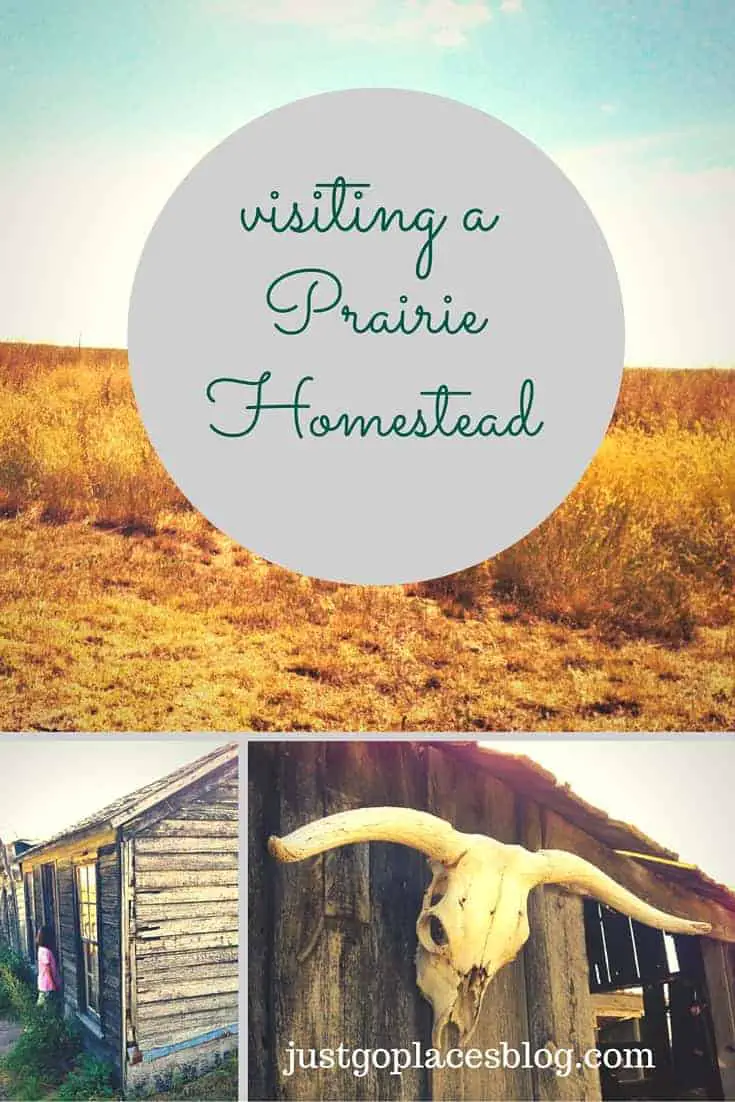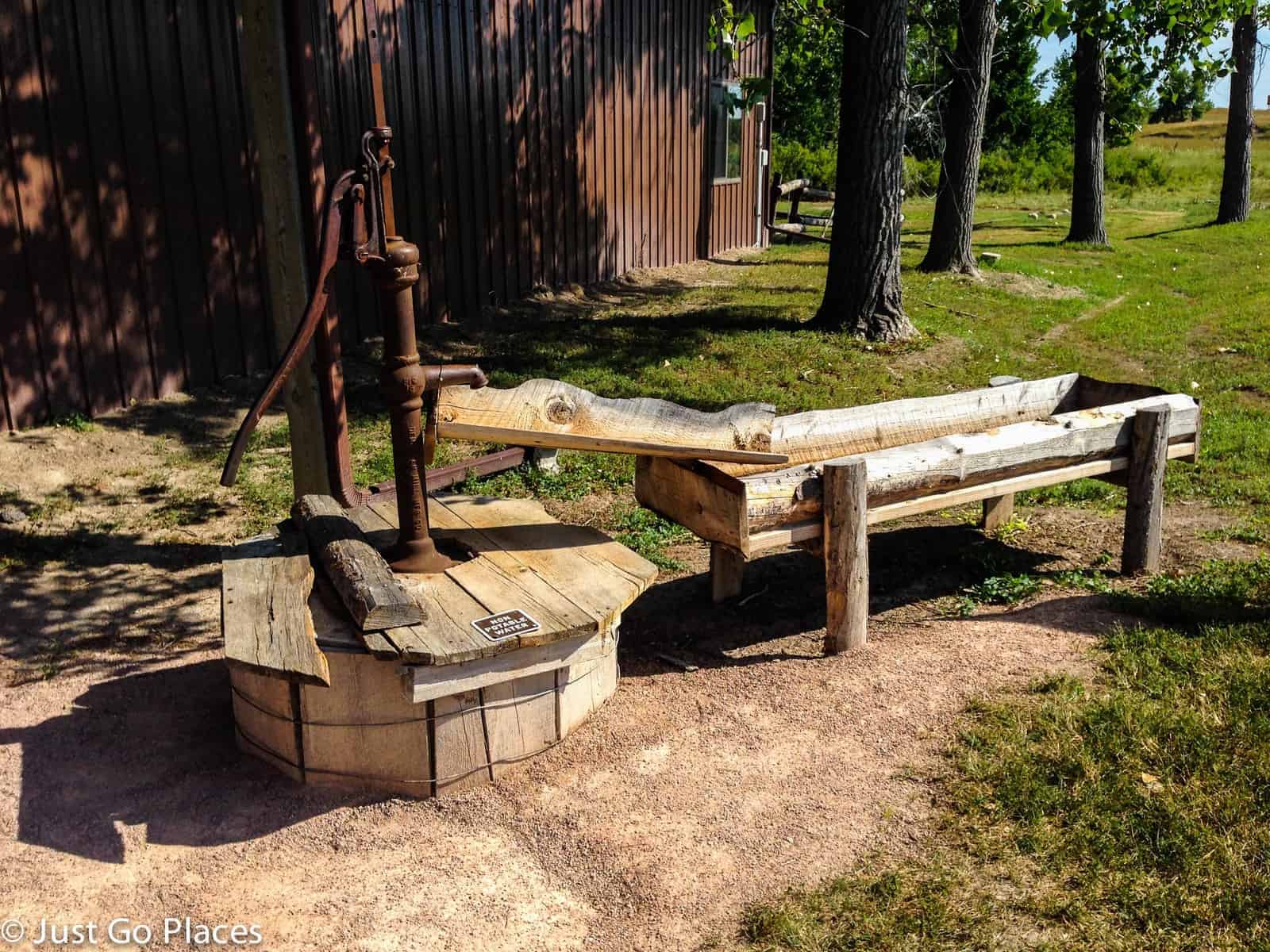The miles of flat dusty prairie stretched out ahead of us. In our car with digital radio and air conditioning, we could admire the vastness of the American plains without any of its attendant discomforts. It was easy to pin the hopes and dreams of a young country on this unending horizon and believe your luck could be as expansive as the countryside. The early settlers carved their homes from the ground burrowing deep for shelter against a merciless landscape. Although many of the sod homes have collapsed back into the earth from which they were dug, a prairie homestead museum in South Dakota stands testament to this long-gone way of life in this part of the world.
Contents
Prairie Homesteads and the Homestead Acts
I had heard of prairie homesteads from history class and, of course, the Little House on the Prairie books. The Ingalls’ family prairie homestead is long gone because these sod homes usually just caved into the elements.
The very well preserved Prairie Homestead, now on the National Register of Historic Places, is today a museum offering a glimpse into the hardscrabble life of the early pioneers in the Western United States.
South Dakota was one of the last areas in the USA to be homesteaded. Originally this area was set aside for the Native Americans because the Badlands were sacred to they Cheyenne tribes that lived here. There was ongoing trouble though between the Native Americans and encroaching Americans looking for silver and gold. Finally the US government went back on their word and just annexed the area.
The Homestead Acts were a series of US Government laws that let people stake their claim on government land if they could build a home and farm it for a minimum of 5 years. The government got people to settle on new lands and create a stable community. The homesteaders realised their dream of owning property if they could just stick through the hardships.
You may remember the Hollywood version of The Homestead Acts in practice in that (awful) movie Far and Away with Tom Cruise and Nicole Kidman. That movie ended with the two main characters staking their claim to land. The real story though would have been that their hardships would only have just started. That part of the story though would not have been glamorous enough for Hollywood.
The Prairie Homestead of South Dakota
I wondered how the landscape must have seemed for the pioneer homesteaders who made their way here in the early 20th Century though. They would have driven their wagons filled with their few earthly possessions into unknown territory. They headed far away from home fuelled by wanderlust and the promise of a better life. Tenacious and hardy, the early pioneers pitched their claim and created prairie homesteads much as the Ingalls family did in De Smet in South Dakota.
The Prairie Homestead in South Dakota was built in 1909 by Ed Brown who had travelled out west from Iowa with his wife and son. They homesteaded 160 acres in 1909.
Mr. Brown used cottonwood logs to make his home. The house still retains these original logs and beams. The upper walls of the house was buffalo grass sod laid in tiers. The grass sod had incredibly dense roots and were cut into strips and laid like bricks. The grass would then grow and reinforce the house walls.
He dug into the bank to create a cave which worked as a refrigerator in the summer and a place to store food in the winter.
Mr. Brown hand dug this well for water. Towards the end, you could only get about 8 buckets of water a day from it.
Mr. Brown only needed to work 5 acres of his 160 acres in order to stake his claim. After 18 months, he was allowed to pay a total of $80 and get the rights to all of his land.
Think this was a good deal? Not really. It was incredibly difficult to survive by farming the land in the Great Plains. Although 160 acres sounds like a lot of land, conditions were so tough that it would only provide enough grazing land for 8 cows. The lawmakers who wrote the Homesteading Acts didn’t really understand the arid conditions of the Great Plains.
Mr. Brown died at the Prairie Homestead in 1920. His wife moved later to California to be near her daughter. Her daughter wrote about her parents:
“They loved the place, the country and all the people. Mother was so happy to be there, even though she worked hard.”
When Mrs. Brown moved to California, she rented the homestead out to a George Carr who himself had come from Iowa. He lived in the Prairie Homestead until 1949. So, despite the hardships, for many people a homestead was a dream come true.
Visiting the Prairie Homestead Museum in South Dakota
The Prairie Homestead Museum is located off South Dakota Highway 240 near the Northeast entrance to the Badlands National Park. Admission fees for adults are $7 and children under 9 go free. The Prairie Homestead has a large and well-stocked gift store. Do check out its website for hours because they are seasonal.












